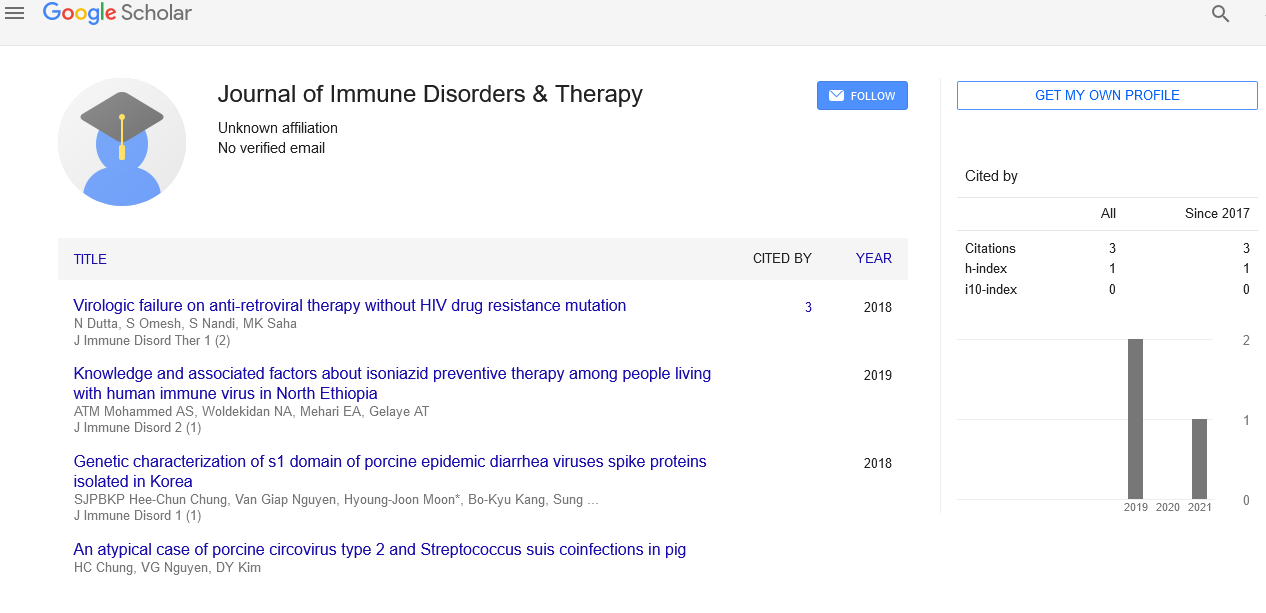Study on Tumor Immunology
Received: 03-Dec-2021 Accepted Date: Dec 17, 2021; Published: 24-Dec-2021
This open-access article is distributed under the terms of the Creative Commons Attribution Non-Commercial License (CC BY-NC) (http://creativecommons.org/licenses/by-nc/4.0/), which permits reuse, distribution and reproduction of the article, provided that the original work is properly cited and the reuse is restricted to noncommercial purposes. For commercial reuse, contact reprints@pulsus.com
Abstract
Commentary
Disease immunology is an interdisciplinary subject of science worried about the contribution of the resistant framework in the movement and advancement of malignant growth. Disease immunotherapy is the most notable application, where the resistant framework is utilized to treat malignant growth. Burnet and Thomas proposed in 1957 that lymphocytes work as sentinels, perceiving and eliminating persistently creating, incipient adjusted cells, which they called disease immunosurveillance. Malignant growth immunosurveillance has all the earmarks of being a basic host guard component that diminishes disease rates by repressing carcinogenesis and saving cell homeostasis. It’s additionally been contended that immunosurveillance is to a great extent utilized as a component of a more extensive malignant growth immunoediting process. Growth antigens, which are perceived by the safe framework and can set off an immunological reaction, can be found in cancers. TSA (cancer explicit antigen) or TAA (growth related antigen) are the two kinds of cancer antigens (Tumorrelated antigen). Antigens observed exclusively in cancer cells are known as growth explicit antigens (TSA). TSAs can be created by oncoviruses, for example, the Human papillomavirus E6 and E7 proteins, which are found in cervical malignant growth, or the EBV EBNA-1 protein, which is found in Burkitt’s lymphoma cells. Strange results of freak oncogenes and enemies of oncogenes are one more kind of TSAs. Harmful related antigens (TAA) are found in sound cells yet additionally in cancer cells for obscure reasons. They contrast, in any case, as far as amount, area, and time span of articulation. Growth related antigens communicated by undeveloped cells and cancers are known as oncofetal antigens. AFP (- fetoprotein), which is created by hepatocellular carcinoma, and CEA (carcinoembryonic antigen), which is seen as in ovarian and colon disease, are instances of oncofetal antigens. The resistant framework connects with growth cells during the time spent disease immunoediting. Disposal, balance, and break are the three stages. Immunoediting includes both the versatile and intrinsic invulnerable frameworks. During the disposal stage, the invulnerable reaction makes growth cells be annihilated, bringing about cancer concealment. Some cancer cells, then again, may collect extra transformations, change their properties, and evade the resistant framework. These cells might enter a balance stage, in which the safe framework doesn’t perceive all cancer cells yet the growth doesn’t develop simultaneously. The present circumstance might prompt the period of departure, in which the cancer oversees the invulnerable framework, starts to develop, and establishes an immunosuppressive climate. As the distinguished cells are killed because of immunoediting, cancer cell clones that are less delicate to the resistant framework gain strength in the growth over the long haul. This instrument is like Darwinian development, in which favorable to oncogenic or immunosuppressive change conveying cells make due to give their transformations to girl cells, which may then transform and be exposed to more specific strain. Accordingly, the growth is made out of cells with low immunogenicity and is hard to destroy. This condition has been affirmed to happen because of disease patients’ immunotherapies. The insusceptible framework could assume a part in killing chemotherapy-safe disease cells through a ‘observer impact.’ However, further exploration is expected to see how the safe reaction to kicking the bucket cancer cells is produced.
Acknowledgement
The authors are grateful to the journal editor and the anonymous reviewers for their helpful comments and suggestions.
Conflict of Interest
The authors declared no potential conflicts of interest for the research, authorship, and/or publication of this article.





